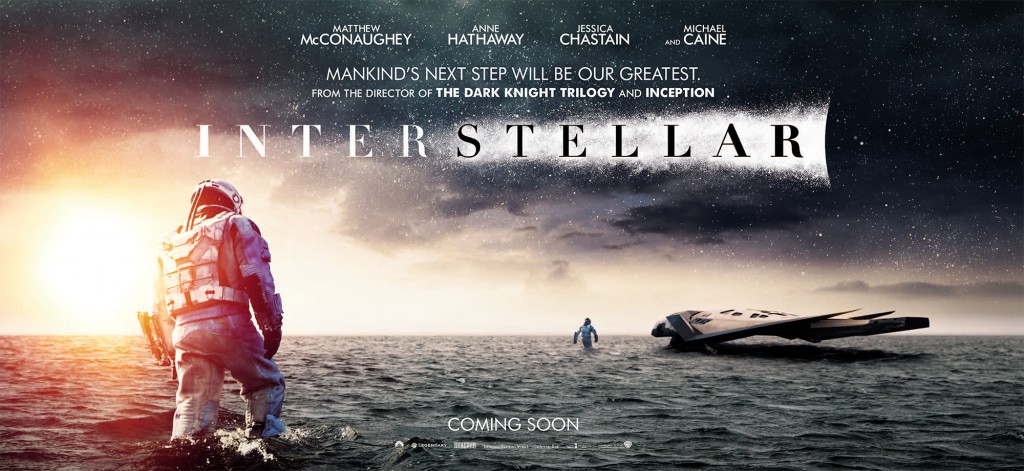When first seeing the trailer for Christopher Nolan’s new film “Interstellar,” one might think it is “Gravity” folded into “Inception.” It looks like a very complicated space movie dealing with interstellar travel. But after seeing it, the viewer realizes it is neither “Inception” nor “Gravity.” It is an entity unto itself to which other movies will be compared.
This will surely be an iconic movie. Set on Earth in an ambiguously distant future, probably not too distant from current time, and resources are used up. Plants won’t grow and people are starving. The entire world is a dustbowl, with constant blowing dirt and sand peppering everyone and everything. There is no chance of survival on this planet. The only solution is to find a new one.
A wormhole is mysteriously opened up in Saturn’s orbit and the initial probes sent through it relay only the smallest amount of data – it is another galaxy, with a dozen possible worlds in several solar systems. At least a few of them promise to be habitable worlds with fresh water, breathable air and organics growing. The only problem is that it is so far away. The dilemma is how to transport Earth’s surviving people to Saturn, let alone through a wormhole, to scout planets.
The film follows a group of scouts sent through the wormhole to see which planet will become home. I won’t say any more because the reveals and twists and turns of the plot are really great and something not to be missed.
Some of Nolan’s shots are suggestive of “2001: A Space Odyssey,” but the way “2001” should have been done. For example, one shot focuses on Matthew McConaughey’s space helmet as the ship rockets through the wormhole. We see reflections of galaxies, stars and nebulae flashing past him on both sides at incredible speeds. This is very reminiscent of the shot towards the end of “2001” when the same thing happens, but with colored lights instead of real celestial bodies. Granted, effects have come a long way to make this shot possible and I do not want to come down on “2001.” It is an amazing film and technically breathtaking – for its time and even by today’s standards. But in “Interstellar” this shot struck me as what Kubrick would do now if he were making “2001” with today’s technology. This film has little hidden homages to one of the greatest space films ever made, so keep your eyes peeled.
As a film overall, I liked it; I didn’t love it, but I liked it. Nolan has a way of pleasing the audience with the story for a while, then hitting a speed bump that derails it for a bit before getting back on course and finishing strong. The speed bump in this one is small, but present.
When trying to settle on which planet to explore as fuel resources dwindle, Anne Hathaway’s character has a soliloquy about choosing one planet because the man she loves is down there and love is the great mystery and should be followed because it can cross time and space, just like gravity.
Speed bump.
In a movie that is so scientific in every detail, from intergalactic travel to time dilation to string theory and a bunch of other physics stuff, and then bringing out love as a quantifiable resource to lead her to a planet that will support life just shatters the whole illusion. Of course the other astronauts stare blankly at her and tell her she is wrong because love is not scientific, so she storms off.
But the speed bump is passed quickly and the film turfs out really well. It is visually stunning, mentally stimulating and emotionally uplifting. It promotes the importance of taking care of the planet and to start thinking as a species rather than as individuals. It raises the possibility of a future that one hopes comes to pass because it is a future that would really benefit all mankind and make us citizens of the universe instead of warring tribes on a solitary rock. Rated PG-13 and with a runtime of almost three hours, it is definitely not one to miss.
I give this film 3.5 out of 5 stars.

